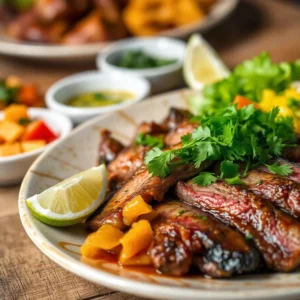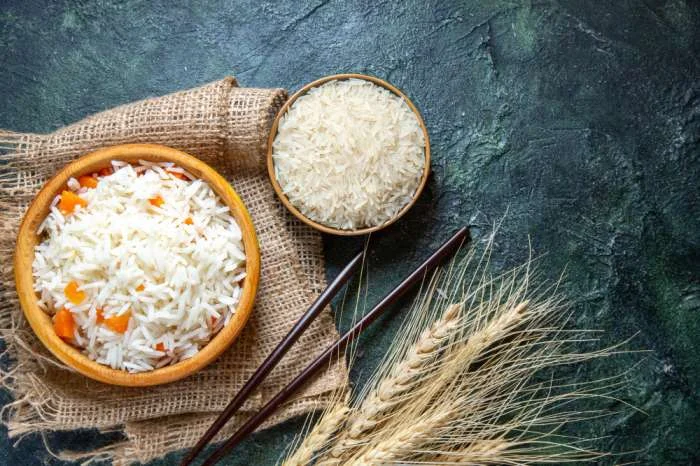Have you ever stumbled upon a dish so unexpectedly delicious that it completely reshaped how you think about an ingredient you’ve eaten your whole life? That was me in Mexico City, standing by a modest street cart when I first encountered Sabana de Res. I thought I knew beef—but one bite in, with the sizzling juices soaking into a warm tortilla, I realised I’d been missing out on an entire world of flavour and tradition.
Sabana de Res isn’t just another steak recipe. It’s an expression of Mexican culinary ingenuity: thinly pounded beef cooked on a griddle, typically layered with cheese, and paired with fresh sides. It’s simple at first glance, but its texture, versatility, and cultural roots make it one of the most fascinating beef dishes you can explore.
In this article, I’ll not only take you through what Sabana de Res is and how it’s prepared, but I’ll also share expert insights, personal tasting notes, and practical tips if you’d like to recreate it at home.
What is Sabana de Res?
The term “sabana” translates to sheet or blanket in Spanish, and that’s exactly what the dish looks like: a thin sheet of beef, pounded flat to cover a griddle, then cooked quickly over high heat. Traditionally, it’s topped with cheese (often Oaxaca or Manchego), which melts over the beef to create a gooey, flavourful topping.
Dr. Javier Morales, a food historian at the Universidad Nacional Autónoma de México (UNAM), explains:
“Sabana de Res represents a practical yet celebratory way of preparing beef. Flattening the meat not only tenderises it but also allows it to be stretched across more portions, a practice rooted in both efficiency and hospitality.”
Unlike a thick steak, Sabana de Res is all about balance—thin beef, rich cheese, and complementary sides that cut through the richness, like salsa verde, pickled onions, or fresh guacamole.
My First Taste: A Story from Mexico City
When I first ordered Sabana de Res, the vendor handed me what looked like a giant tortilla blanket of beef topped with bubbling cheese. The first bite hit me with layers: smoky, savoury meat, creamy cheese, and a squeeze of lime that brought it all together. I’d had carne asada before, but this was lighter, somehow more refined while still rustic.
I even tested different toppings on repeat visits: once with salsa roja, another time with grilled spring onions. What surprised me most? How differently the dish presented itself depending on the side—bright and zesty with citrus, earthy and hearty with beans.
How to Make Sabana de Res at Home
One of the best things about Sabana de Res is that it’s surprisingly achievable in a home kitchen.
Ingredients You’ll Need:
- 500g of thin beef steak (sirloin or flank works well)
- Oaxaca cheese (or mozzarella if you can’t source it)
- Salt, pepper, and garlic powder for seasoning
- Olive oil (or traditional lard for authenticity)
- Fresh toppings: lime wedges, salsa, guacamole, pickled onions
Preparation Method:
- Tenderise the beef: Place the steak between sheets of baking paper and pound until very thin. I tried both lightly and heavily pounding; thinner cuts cooked faster and soaked up the cheese better.
- Season generously: A simple mix of salt, pepper, and garlic powder enhances the beef without overpowering it.
- Cook on a hot griddle: Heat oil until it shimmers, then lay the beef flat. Cook for 2–3 minutes on each side.
- Add the cheese: While the second side cooks, scatter Oaxaca cheese over the top. Cover briefly to allow the cheese to melt fully.
- Serve immediately: Transfer to a warm tortilla or plate, top with your favourite sides, and enjoy.
Expert Cooking Insights
To elevate this dish beyond a casual recipe, I reached out to Chef María González, owner of a popular taquería in Puebla. She shared:
“The secret is in the pounding. If the beef isn’t thin enough, the cheese won’t adhere properly. And don’t be afraid of lard—it creates a smoky richness you won’t get with vegetable oils.”
I tested her advice, swapping olive oil for lard, and she was right. The result had a depth of flavour that immediately reminded me of the original street version.
Nutrition and Health Perspective
While Sabana de Res is indulgent, it also offers nutritional value. According to the USDA FoodData Central, a 100g portion of lean beef provides:
- 26g of protein
- 2.6mg of iron
- 2.5µg of Vitamin B12
Nutritionist Dr. Elena Ruiz notes:
“Pairing Sabana de Res with vitamin C-rich sides like salsa with fresh tomatoes or lime juice helps increase iron absorption, making the dish not just tasty but nutritionally smart.”
This means that enjoying it with fresh vegetables isn’t just traditional—it’s also scientifically beneficial.
Cultural Significance
Beyond taste, Sabana de Res embodies the resourcefulness of Mexican cuisine. Historically, pounding beef thin allowed households to stretch a single cut into multiple servings, feeding larger families without compromising on taste.
At celebrations, it often serves as a centrepiece dish, layered with cheese and surrounded by vibrant sides. Unlike tacos or tamales, which are globally known, Sabana de Res remains more of a local gem—making it a unique dish for food enthusiasts seeking authenticity.
Tips for Perfecting Sabana de Res at Home
- Don’t skip the pounding: This transforms the texture and ensures the cheese binds to the beef.
- Choose melting cheese wisely: Oaxaca is best, but Monterey Jack or mozzarella can work.
- Experiment with sides: Try sautéed peppers, fresh radish slices, or even a drizzle of chipotle crema.
- Use a cast iron skillet: It retains high heat and creates that authentic sear.
FAQ:
Is Sabana de Res the same as carne asada?
No. Carne asada is grilled beef, usually in thicker cuts, while Sabana de Res is thinly pounded, pan-seared, and topped with cheese.
What cut of beef works best?
Flank steak or sirloin, but any lean cut that can be pounded thin works.
Can I make it without cheese?
Yes, though cheese is traditional. For a dairy-free option, try topping with roasted vegetables.
Where can I try authentic Sabana de Res?
Street stalls in Mexico City, Puebla, and Oaxaca are famous for it. Some traditional taquerías also serve it.
Final Thoughts
Sabana de Res might not yet be as globally popular as tacos or enchiladas, but it deserves recognition. Its balance of flavour, simplicity of preparation, and cultural depth make it a dish worth both tasting and cooking.
If you give it a try, I’d love to know: What toppings did you choose? Did you stick with cheese or try your own twist? Share your experience—I’m always curious to see how people bring traditional dishes into their own kitchens.
Further Reading & References:
You May Also Like our new recipe about Mojito Milkshake. Make sure to check it out!

Sabana De Res
Equipment
- Large skillet or frying pan
- Blender or food processor
- Cutting board and knife
- Measuring spoons and cups
- Spatula or tongs
- Saucepan (for rice, optional)
Ingredients
1 slice beef steak (flank or sirloin), thinly sliced
2 tablespoons olive oil
Pinch kosher salt
Pinch ground black pepper
2 garlic cloves or minced garlic
1 medium onion, sliced
2 tablespoons sesame seeds
1 pasilla chili
1 guajillo chili
1 can crushed tomatoes
1/4 cup beef broth or beef stock
1/4 cup lime juice
1 tablespoon cream cheese
1 cup rice, cooked
1 avocado, sliced
1 tablespoon freshly chopped cilantro
1/4 cup Cotija cheese, crumbled
Instructions
Season the beef slices with salt and pepper.
Heat olive oil in a large skillet over medium heat. Sear the beef slices on both sides until browned and tender. Remove from the skillet and set aside.
In the same skillet, add onions, garlic, sesame seeds, pasilla chili, and guajillo chili. Sauté until the onions are translucent and the chilies release their aroma.
Transfer the sautéed mixture to a blender or food processor. Add crushed tomatoes, beef broth, and lime juice. Blend until smooth.
Pour the sauce back into the skillet. Add cream cheese and stir until melted. Return the seared beef to the skillet, ensuring the slices are coated in the sauce. Simmer for a few minutes to meld flavors.
Serve the beef and sauce over a bed of cooked rice. Top with avocado slices, chopped cilantro, and crumbled Cotija cheese.
Notes
Vegetarian Option: Replace the beef with portobello mushrooms or jackfruit, and use vegetable broth for the sauce.
Make Ahead: Prepare the sauce and sear the beef in advance. Store separately in airtight containers in the refrigerator for up to 3 days. Reheat gently when ready to serve.
Rice Tips: Use long-grain rice or cilantro-lime rice for added flavor. Enjoy this timeless Sabana de Res recipe as a celebration of bold, smoky, and tangy flavors in every bite!

















